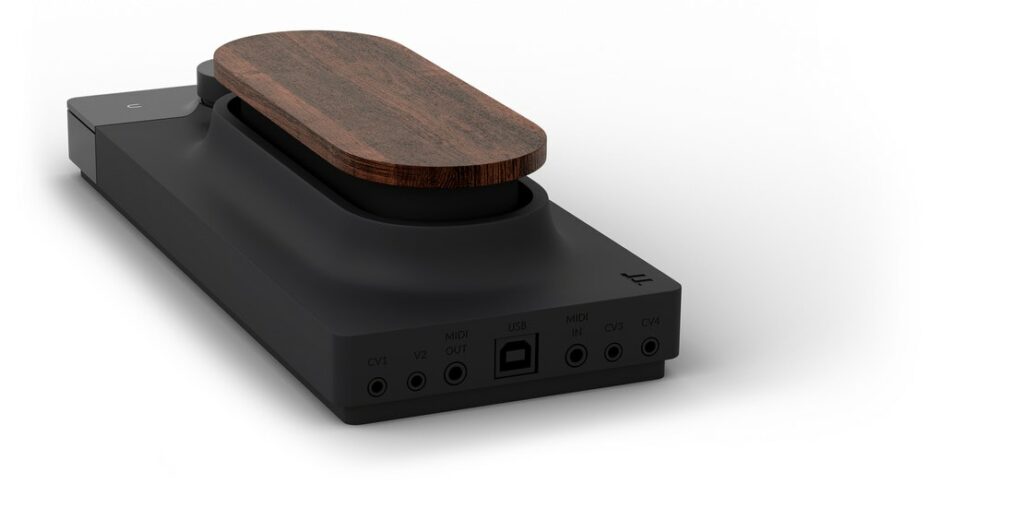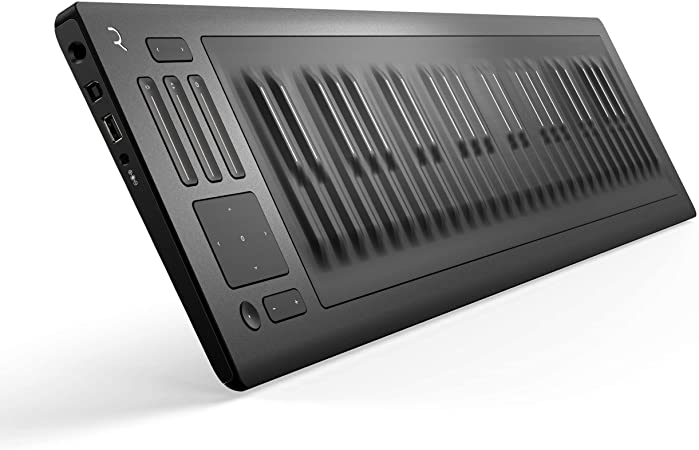
In modern Midi keyboards, there are several possibilities to record expressions. The widest spread feature is the velocity control. This parameter is controlled by the velocity one hits the keys and thus can be easily added by keyboard performers in their playing like they would playing an acoustic instrument. With the synthesizer and the possibility to create the sound of the instrument individual to the performance also came the possibility to control parameters of a sound which in acoustic or electro-acoustic keyboard instruments with keys and pedals only really possible. The Pitch and Mod wheel were introduced to make such changes possible. The first was a spring-actuated week or stick which was mostly used to modulate the pitch like with a guitar. The other was an adjustable heel with which one could send fixed values or modulate them manually. The fourth modulation source developed for keyboard synthesizers is aftertouch. As the name suggests, it is applied by altering the pressure after the key is depressed. This can be applied mono- or polyphonically. All of those controls added to the expressivity of synthesizer performances mostly. Only one of those controls is determined before the tone or as the tone is generated. The others are applied in the decay of the sound. So those are 4 control values that have been proven to add expressivity in performance.
Ofcourse, these weren’t the only tools that were developed to do very expressive performances, although they are the most common ones. There is a multitude of midi controllers to add expression to an electronic music performance. The expressive E ‘Touché’ or ‘Osmose’, Buchla and Serge capacitive keyboards and joystick-controllers on synths like the EMS Synthy, Korg devices like the Sigma or the Delta and as controller module for Eurorack-, 5U-, Buchla- and Serge-modules.
Other Concepts
Then there are control surfaces that take another approach to the whole concept of the Keyboard entirely. These Concepts go often but not always hand in hand with a synthesizer engine.
HAKEN Continuum
The Haken Continuum for instance is a Synthesizer with a control surface that can detect movement in 3 axes.
The Haken Continuum Fingerboard is an instrument born to be as expressive and as rewarding to play as an acoustic instrument. The uniquely designed sensitive playing surface has been symbiotically merged with its powerful synthesis sound engine to produce a truly unique playing experience. The Continuum is a holistic electronic instrument that puts its player at the heart of a uniquely fluent, gestural and intuitive musical playing experience.
https://www.hakenaudio.com/

Roli Seaboard
The Roli SEA Technology which is implemented in rolis seaboard controllers is as roli puts it:
“Sensory, Elastic and Adaptive. Highly precise, information-rich, and pressure-sensitive. It enables seamless transitions between discrete and continuous input, and captures three-dimensional gestures while simultaneously providing the user with tactile feedback.”
www.roli.com

Linnstrument
The Linnstrument is a control surface developed by famous instrument designer Roger Linn. Interesting here is the approach to not apply a piano-style keyboard but rather use a grid-style keyboard which rather reminds of the tonal layout of string and guitar instruments. With the linnstrument there is also a release velocity recorded which places it even more into guitar territories where pull-offs, when one rapidly pulls of the finger of a string to excite it and thus making it sound, is a standard technique.

So few of the looked at control surfaces if any have more than 4 modulatable values. This would be then a minimum for a module that should be able to translate the expression of an instrumentalist into control voltages.